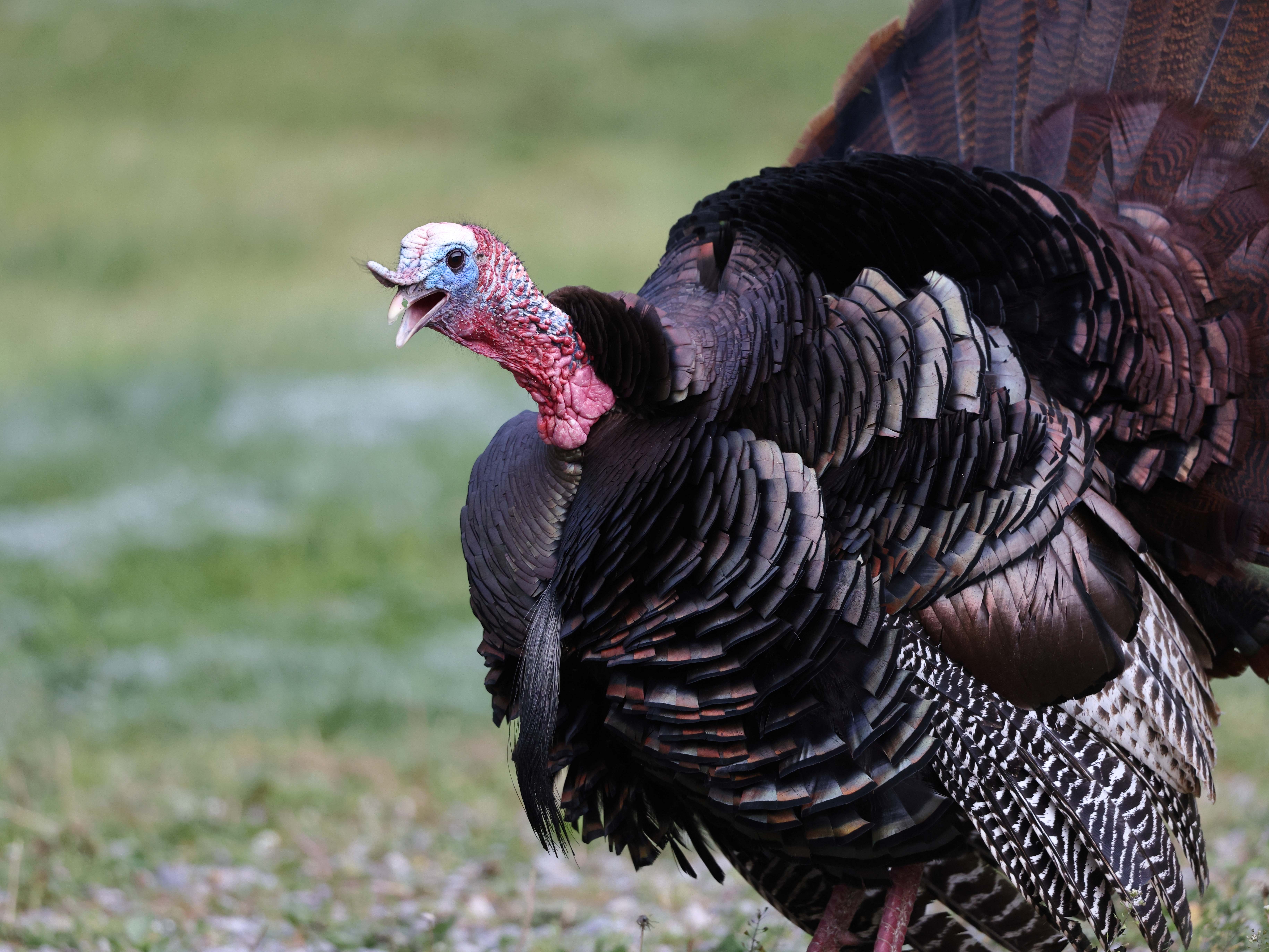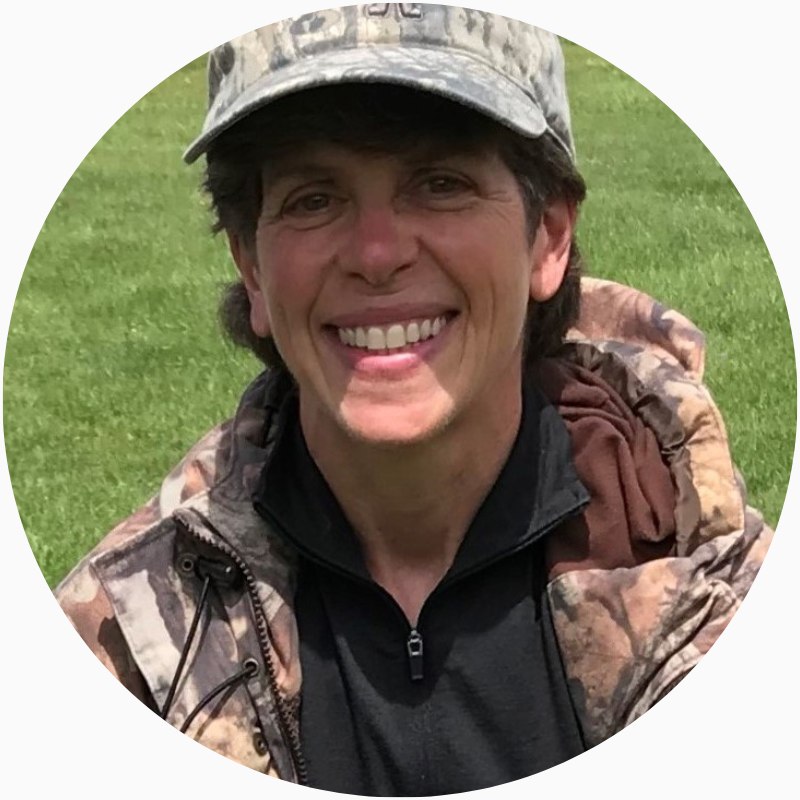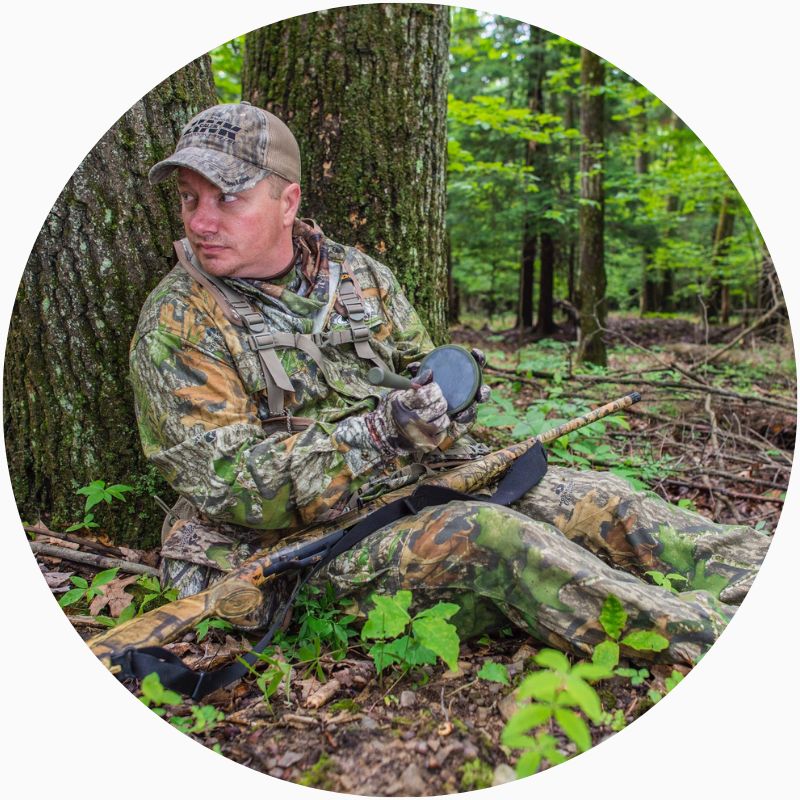Gobbledygook? Making Sense of Pennsylvania Turkey Talk & Tactics
 We asked our
social media followers for their burning questions about wild turkeys and hunting these birds in Pennsylvania.
We asked our
social media followers for their burning questions about wild turkeys and hunting these birds in Pennsylvania.
Wild Turkey Biologist Mary Jo Casalena has answers to all your general
turkey questions, while Marketing and Strategic Communications Bureau Director Matt Morrett, who’s also a world champion turkey caller, weighs on all things
spring gobbler hunting.
Why is the Pennsylvania spring gobbler season so late compared to other states?
MC: The Pennsylvania Game Commission’s goal is to maintain proper wild turkey management strategies while providing hunters with maximum opportunities to harvest a bird. The agency has various wildlife management plans for certain game species that are created and followed to ensure long-term sustainability of the resource.
The Wild Turkey Management Plan specifies a statewide, month-long, spring gobbler season, opening on the Saturday closest to May 1, plus a half-day, statewide youth-only hunt the Saturday prior.
Opening day is specially timed for when most hens, in an average year, have started to incubate their eggs. This ensures all hens have had opportunities to breed with gobblers uninterrupted by hunters. In addition, hens are less prone to abandon their nests if disturbed after incubation is underway. Spring hen disturbance and mortality can never be fully eliminated, but by giving them a little extra time prior up to peak incubation, we’re greatly decreasing the risk.
When it comes to turkey hunting, Pennsylvania is unique, and for good reason. We’re one of the leading states when it comes to turkey hunters! We have nearly 200,000 turkey hunters and high adult gobbler harvest rates — considerably more than many other states. With that, our seasons and management plans need to account for high harvest potential and possible disturbance of hens given the number of hunters. Pennsylvania’s management plan and seasons are not, and should not, be the same as other states, to ensure long-term sustainability of the wild turkey population.
How is the turkey population doing in Pennsylvania? Is it rising or declining?
MC: Long-term turkey population trends vary across Pennsylvania. To help us better understand these trends, the Pennsylvania Game Commission is entering its third year of the state’s largest-ever wild turkey research project.
In collaboration with Ohio, Maryland, and New Jersey, the regional study will provide a large sample size to evaluate the impact of weather patterns, disease, hen and nest predation, habitat, and movement on wild turkey populations.
Each year through 2025, hens across four Pennsylvania WMUs are trapped and released on site with radio transmitters to gather location data. Field crews track these birds throughout the year to monitor survival and nesting.
Pennsylvania has already collected over 1.5 million GPS locations and 30.5 million accelerometer records of 271 hens equipped with radio transmitters since the study started in January 2022.
What is the Pennsylvania Game Commission doing to help turkey populations, especially WMUs 4C, 5C, and 5D?
MC: We recommended to the Board of Game Commissioners to decrease the fall season length in WMU 4C from 2 weeks to 1 week. 5C and 5D have no fall season. Additionally, our current turkey population dynamics study is assessing hen turkey reproduction, survival, disease, and movement patterns in areas with increasing, stable, and declining population trends (including 5C) to develop specific management recommendations to improve turkey populations where populations are trending downward.
How is the Pennsylvania Game Commission improving turkey habitat?
MC: Our current turkey population dynamics study is addressing hen habitat use and movement to develop specific habitat management recommendations for improving turkey habitat to in turn improve populations where they are trending downward.
How do woven deer fences impact turkeys? Do they use the fenced areas or avoid them?
MC: Turkeys generally walk along fences until they find a spot suitable to get through if they want to go inside. A turkey will fly over a fence if needed but typically does so from a running start. If a turkey is already flying, it can easily get over the fence and typically avoids it. Fences do not significantly impact turkeys.
How could a reintroduction of the American marten in Pennsylvania affect the wild turkey population?
MC: It will not impact turkey population levels because American martens do not regularly consume wild turkeys or their eggs, they would be reintroduced to limited areas of PA in high elevations that is marginal turkey habitat, and marten population densities are expected to be low.
When do turkeys start to strut?
MC: Strutting can occur any time of the year to show dominance, and both males and sometimes females will strut for this purpose. However, males typically begin strutting on wintering grounds when turkeys are in their winter flocks to establish their dominance. This often begins in late February but is dependent on weather, with strutting beginning earlier when weather is mild. Then, once wintering flocks disperse in late March, males begin to strut more frequently to attract hens to their harem (as well as continue to show dominance among other males).
What’s the best decoy setup for turkey hunting in Pennsylvania?
MM: I go by how much I can carry. Early in the season, I always like to incorporate a jake. Turkeys are still establishing dominance, and that jake decoy is really important.
But if I had to only use one decoy, I’d use a hen — probably one with a higher head like a lookout-style hen. That’s mainly because she’s showing dominance too, and it’s more attractive to other hens.
My ultimate setup would be that hen and quarter-strut jake combination.
How does your turkey hunting strategy change throughout the season? Does the timing of Pennsylvania’s season make it more difficult?
MM: There was a point in my life when I thought our season was a lot later than it probably should be. We do see a lot of strutting turkeys and that springtime ritual earlier than the first week of May. But it’s tougher to call up a gobbler in that April timeframe, mainly because they’re henned up and they’re breeding. They’re flying down and getting with their hens. It makes it tough for us as hunters to call them in. I really have come to love the way our season structure is. I’ve heard turkeys gobble and watched gobblers court hens in July. Our season structure is set so the majority of our hens are able to breed and be successful at having a clutch of eggs.
My calling strategy doesn’t really change throughout the season. I want to sound as much like a hen as possible. Turkeys are talking to each other all year long. I’m always willing to talk to a turkey that wants to talk to me.
Earlier in the season, we’ve got to look at pressure more than anything. Sometimes we don’t think about that as hunters. We’re lucky in Pennsylvania — we probably have close to 200,000 turkey hunters in the springtime. There’s a lot of states that don’t have that many licensed hunters throughout the whole state.
The biggest thing is to sound as much like a turkey as you can. And today there’s no excuse. You can go on YouTube and search for a hen yelp, and it’s there. Back in the old days when I was learning how to call, you had to go out and spend time with turkeys — that’s how you learned to call. Nowadays, it’s everywhere.
There’s an argument out there that you don’t have to be a good caller, and I’m not going to argue with anybody on that. But the more you can sound like a turkey and talk to them like they do every day, the more turkeys you’re going to call up.
Early in the season, I might incorporate some jake talk and some jake yelps more than I would in the late season, just like with the decoys. I’ll probably pull that jake out of the mix midseason because that pecking order isn’t as important as we get through the season. But I’m always going to sound like a hen that wants to have a date out there. That’s my goal when I go turkey hunting.
Does weather impact your turkey hunting strategy?
MM: Weather definitely has an effect on activity for turkeys. If it’s a low-pressure system, especially in southern states, turkeys just aren’t as vocal. But I’m still going to hunt. You only have so many days, and you have to be out there.
I have a tough time in hard rain. To me, it’s an audio game as much as anything. If I can’t hear a turkey gobble, I’d rather wait until a day I can. It’s not that I’m scared of the rain. I just personally don’t want to sit and wait — I like to go out there and talk to them. But you might only have 2 or 3 days a year to hunt. Don’t let the rain deter you. If it’s rainy outside, turkeys get to an open area where they’ll feel safe.
Through your scouting and knowing the area and knowing the turkeys that might be around, you put yourself in the right place. It’s kind of like a chess match, and not every day is successful. But when you stack those odds in your favor, sometimes that means meat on the table.
Is spring gobbler season a good time to introduce someone to hunting?
MM: Turkey hunting is the ultimate way to introduce someone new to hunting, even if it’s pre-season — just going out and listening to a morning wakeup with every little songbird coming to life. As the buds are coming out on the trees, you’re seeing the winter depression unfold. Just hearing that first turkey gobble in my life turned me into an outdoorsman.
As we progress into the season, there’s a lot of interaction. The weather is generally not as cold, and just talking to another species in their language is a good way to burn the outdoors into someone’s soul. If you have somebody that has an interest in hunting and you want to get them involved to stay, trade in a day that you might get out there with your favorite shotgun in your hand and put it in a mentee’s hand and introduce them to the outdoors.
Hunters are responsible for conservation of wild animals, and we need you for the future.
How do you find gobblers in Pennsylvania?
MM: Get out there before spring gobbler, but don’t just limit your scouting to before the season. If you’re out there in the morning and nothing’s happening, use your shoe leather and do a lot of scouting.
First thing in the morning, they’re letting other turkeys know where they’re at, and that gobble is the best indicator. But you can figure out where you want to hunt by just scouting around the woods, looking for areas later in the season where there might be hens nesting close to water, thicket, and cover — areas where you’ve seen hens later in the season. Turkeys don’t really move into some of the areas I hunt until later in the season. It makes for a great hunt.
Spend time looking around for droppings. A gobbler has more of a J-shaped dropping, and a hen’s looks more like popcorn. Tracks are a telltale sign on roads. I’m going to get out there and try to figure those areas out. I’m going to areas where a lot of people probably haven’t been.
There’s luck involved, and there’s skill involved. Use every day you’re out in the field to learn. The more you can put in your memory bank, the more successful you’ll be. As a hunter, it changes throughout your life. Early on, you think you want to call up every turkey and have them at the end of your boots. That’s not going to happen. Hunting is hunting. Nobody gets the job done every day, but there are people who are always in the game. I want to be in the game every time I go into the woods. Learn about a new tree, a new food source, areas with water (turkeys need water) — everyday is a scouting and learning trip to me no matter what I’m doing outside.
 Mary Jo Casalena
Mary Jo Casalena
Mary Jo Casalena, Certified Wildlife Biologist, has been a wildlife biologist with the Pennsylvania Game Commission since 1993. Since 1999, she has been the agency’s wild turkey biologist with responsibility for the wild turkey research and population management programs. She has a bachelor’s degree in wildlife and fisheries science from the University of Massachusetts and master’s degree in the same from Penn State University.
 Matt Morrett
Matt Morrett
Matt Morrett is the Pennsylvania Game Commission’s Marketing and Strategic Communications Bureau Director. He previously worked in the hunting industry, developing innovative products and launching iconic television series, for 30 years. A passionate turkey hunter, he’s won more than a dozen calling competitions, including Grand National titles in junior and senior divisions.